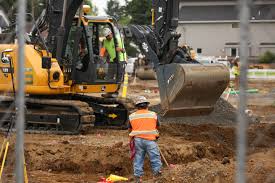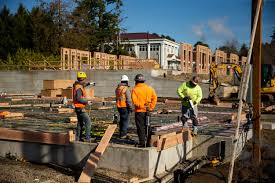
SALEM, Ore. — Oregon Governor Tina Kotek signed five significant housing bills into law this week, aiming to tackle the state’s housing shortage by boosting construction and removing long-standing barriers for developers and local governments.

The new legislation—House Bills 2138, 2258, 3031, 3145, and Senate Bill 684—will open up funding, speed up planning approvals, and expand housing options in communities across Oregon.
House Bill 2138 focuses on accelerating middle housing—such as duplexes, triplexes and other multi-unit developments—by pushing cities and counties to more quickly approve land divisions when developers propose multifamily housing.
House Bill 2258 streamlines the process even further by providing developers with pre-approved building plans, cutting red tape for small apartments, single-family homes, duplexes, and townhomes. These ready-made plans come with clear land use and design standards, offering more predictability for builders and local officials alike. “The bill removes barriers and saves time,” the governor’s office said in a statement.
House Bill 3031 tackles one of the biggest hurdles to new construction: infrastructure. The new Housing Infrastructure Project Fund will provide loans, forgivable loans, and grants to cities, counties, special districts, and federally recognized tribes for critical work like roads, water systems, wastewater treatment, stormwater management, and other site prep directly tied to new housing.

Senate Bill 684 sets up the Construction Revolving Loan Fund to deliver long-term financing for mixed-income residential projects—helping developers bridge gaps in capital for projects that blend market-rate and affordable units. The Oregon Housing and Community Services Department will finalize new rules for how these loans work by January 1, 2027.
House Bill 3145 sets aside $25 million in Local Innovation and Fast Track (LIFT) funds to expand the production of factory-built housing, offering a faster, often cheaper way to deliver new homes at scale.
“These new laws give cities, counties, and builders more tools and predictability to get homes built faster,” said Gov. Kotek’s office in the announcement. The state continues to face rising demand for affordable housing, with policymakers under growing pressure to keep up with population growth and rising rents.
Combined, the five new laws target multiple bottlenecks in Oregon’s housing pipeline: slow permitting, unpredictable design reviews, limited infrastructure funding, lack of financing for mixed-income communities, and high upfront costs for modern construction.
By addressing these pain points, lawmakers hope to spur more housing types in both urban and rural areas—especially “missing middle” options like small apartments and multiplexes that have been hard to build under old zoning and planning rules.
Originally reported by Hilary Dorsey in DJC Oregon.